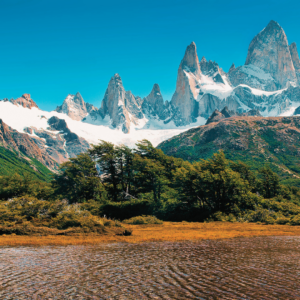South America: A Hub for Global Learning
South America is an increasingly attractive destination for Australian students seeking learning abroad opportunities. With its diverse cultures, ecosystems, and geographical offerings, the region presents a rich landscape for immersive learning experiences. This article explores the unique attributes of South America as a destination for learning abroad, highlighting opportunities across the continent and providing insights into its global context.
The Allure of the Region

South America’s geographical and cultural diversity sets it apart as a dynamic learning environment. From the Amazon rainforest to the Andes mountains, students have access to varied ecosystems and geological features, enriching their understanding of environmental sciences and biodiversity conservation. Furthermore, the continent’s multicultural societies provide opportunities for cross-cultural exchange and language immersion, enhancing students’ intercultural competence and communication skills.
The region has already seen steady growth in the number of international students, with countries like Brazil, Argentina, Chile, and Peru emerging as preferred destinations for study abroad programs (ICEF Monitor, 2024). South America has also been gaining traction as a travel destination for Australians, evidenced by the record number of nearly 105,000 arrivals to Chile alone in 2018 and 2019. Although these numbers plummeted during the COVID-19 pandemic, the Chilean Ministry of Economy, Development and Tourism projected a positive rebound for 2023, anticipating a return to or even exceeding pre-pandemic levels of Australian visitors (Explore, 2023). Additionally, studying in South America offers significant language immersion in Spanish and Portuguese, languages spoken by over 822 million people globally (Statista, 2023). The affordability of living costs in South America further enhances its attractiveness, offering some of the most cost-effective options for students looking to study abroad.
Social, Cultural, and Economic Factors

Social Dynamics: South America is renowned for its vibrant social movements and diverse indigenous cultures. Countries such as Bolivia and Ecuador have made significant strides in recognising indigenous rights and promoting cultural diversity. Bolivia’s indigenous population makes up approximately 41% of the total population (World Bank, 2022). These dynamics offer students the chance to engage with grassroots movements and understand social justice complexities in the region, with numerous NGOs focusing on indigenous rights and environmental conservation.
 Cultural Vibrancy: From Brazil’s colourful carnivals to the ancient ruins of Machu Picchu, South America’s cultural heritage reflects its rich history and traditions. The continent’s diverse population, including indigenous, African, European, and Asian influences, creates a dynamic cultural tapestry. Brazil alone celebrates over 300 cultural festivals annually, including the renowned Rio Carnival, which attracts over 2 million participants (Rio Times, 2023). South America learning abroad programs provide students with the opportunity to immerse themselves in local customs, traditions, and artistic expressions, deepening their appreciation for the region’s cultural richness.
Cultural Vibrancy: From Brazil’s colourful carnivals to the ancient ruins of Machu Picchu, South America’s cultural heritage reflects its rich history and traditions. The continent’s diverse population, including indigenous, African, European, and Asian influences, creates a dynamic cultural tapestry. Brazil alone celebrates over 300 cultural festivals annually, including the renowned Rio Carnival, which attracts over 2 million participants (Rio Times, 2023). South America learning abroad programs provide students with the opportunity to immerse themselves in local customs, traditions, and artistic expressions, deepening their appreciation for the region’s cultural richness.

Economic Landscape: South America’s economic landscape presents both opportunities and challenges. Countries like Chile, Brazil, and Peru have thriving economies driven by natural resources and industry. However, about 30% of the region’s population lives in poverty (ECLAC, 2022), highlighting the stark economic disparities across the continent. This reality provides students with a unique perspective on community development initiatives and the importance of addressing socioeconomic inequalities. Understanding these economic dynamics equips students with valuable insights into global development issues and economic interconnectedness.
Conclusion
As Australian students explore opportunities for learning abroad, South America is a region of immense potential, shaped by its dynamic socio-political, economic, and cultural contexts. By embracing the educational treasures of South America, students can engage with pressing global issues, foster cross-cultural understanding, and embark on transformative learning journeys in one of the world’s most diverse continents.
